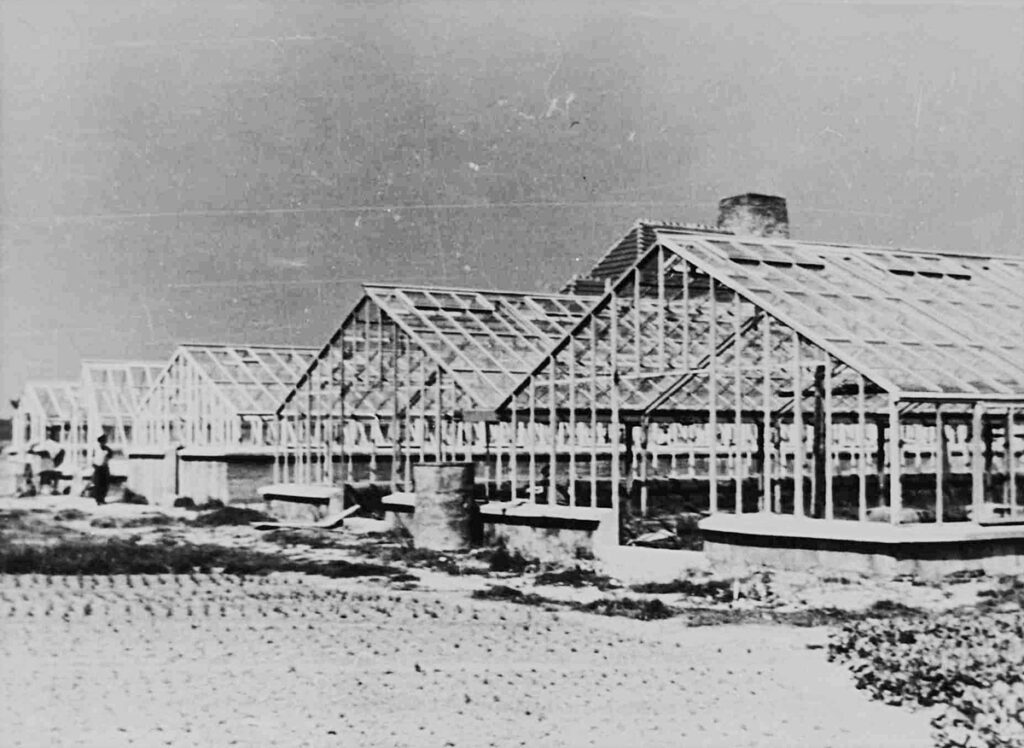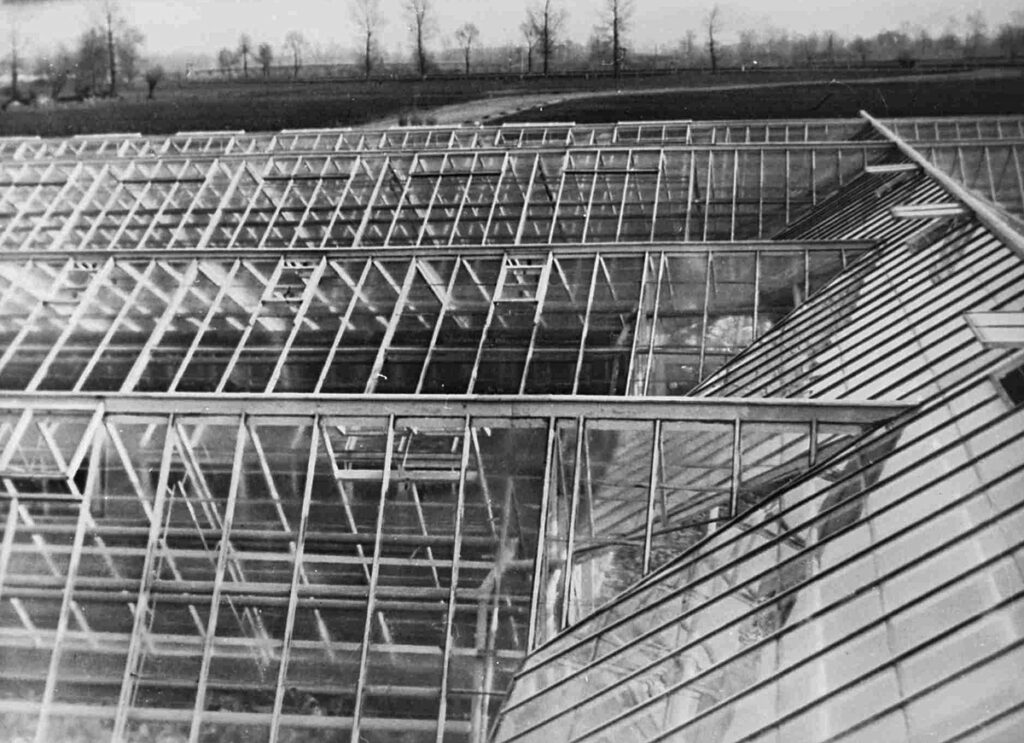Rajsko
The inhabitants of the new city of Auschwitz had to be provided with food. An agricultural estate of more than two thousand hectares was therefore laid out around Auschwitz II-Birkenau. Like
the industrial facilities, its design was ultramodern.
Production was organized according to the ideas of SS officer Walther Darré, one of the pioneers of the industrialization of European agriculture after the war. A precursor of the bio-industry was practised at Auschwitz. Work was carried out by slave labourers, overseen by an SS-associated company, Deutsche Lebensmittel GmbH. Seed was improved in hothouses and experiments were performed on rubber-producing plants.
Battery cages as well as pig, rabbit and poultry farms were set up in Harmęże, Budy, Pławny and Babice, villages near Auschwitz II-Birkenau. Ponds at Budy and Pławny, which also served as reservoirs for excess water from the surrounding marshes, were enclosed and turned into large-scale extensive fish farms.
the industrial facilities, its design was ultramodern.
Production was organized according to the ideas of SS officer Walther Darré, one of the pioneers of the industrialization of European agriculture after the war. A precursor of the bio-industry was practised at Auschwitz. Work was carried out by slave labourers, overseen by an SS-associated company, Deutsche Lebensmittel GmbH. Seed was improved in hothouses and experiments were performed on rubber-producing plants.
Battery cages as well as pig, rabbit and poultry farms were set up in Harmęże, Budy, Pławny and Babice, villages near Auschwitz II-Birkenau. Ponds at Budy and Pławny, which also served as reservoirs for excess water from the surrounding marshes, were enclosed and turned into large-scale extensive fish farms.





